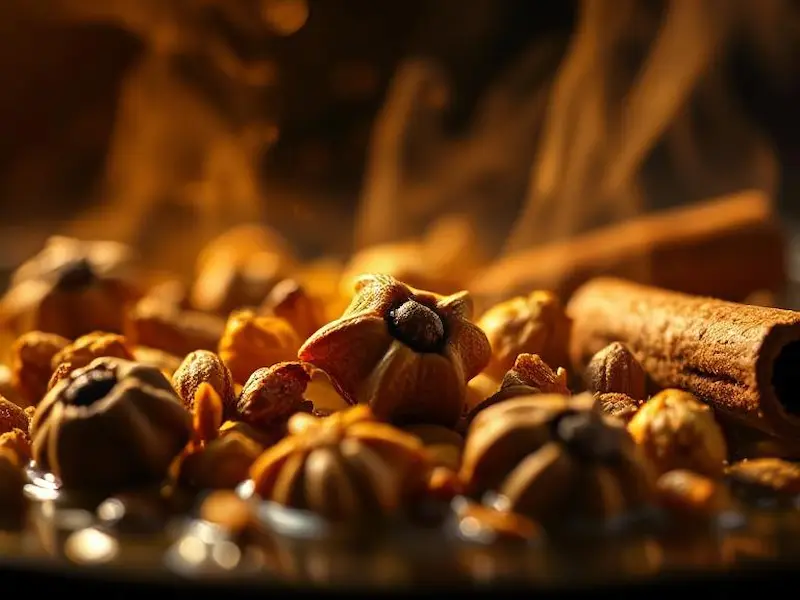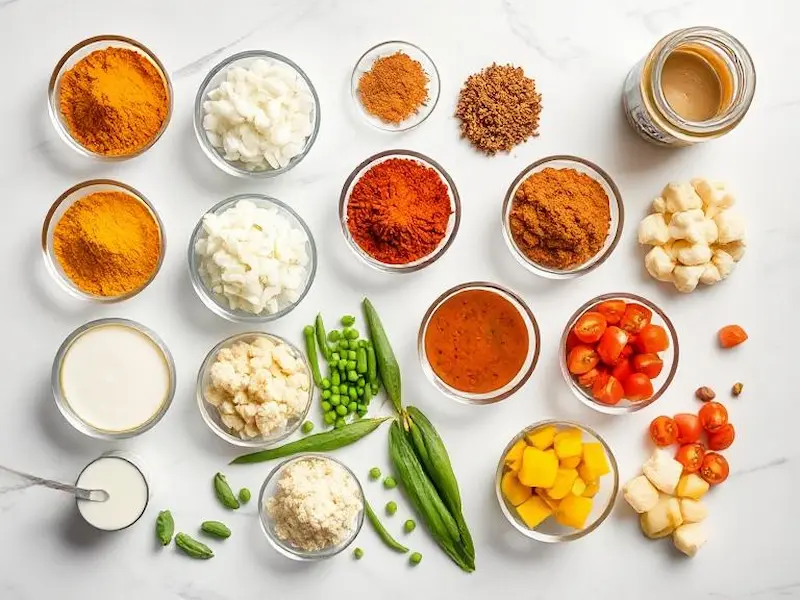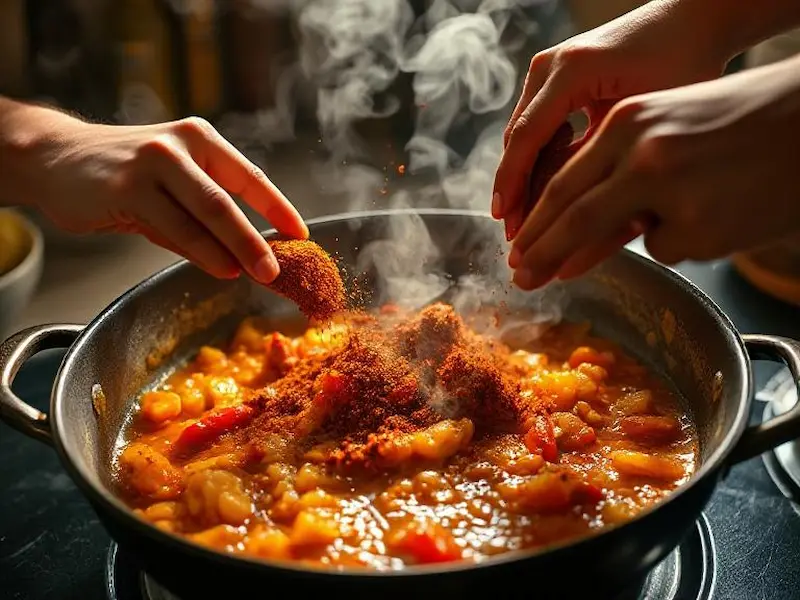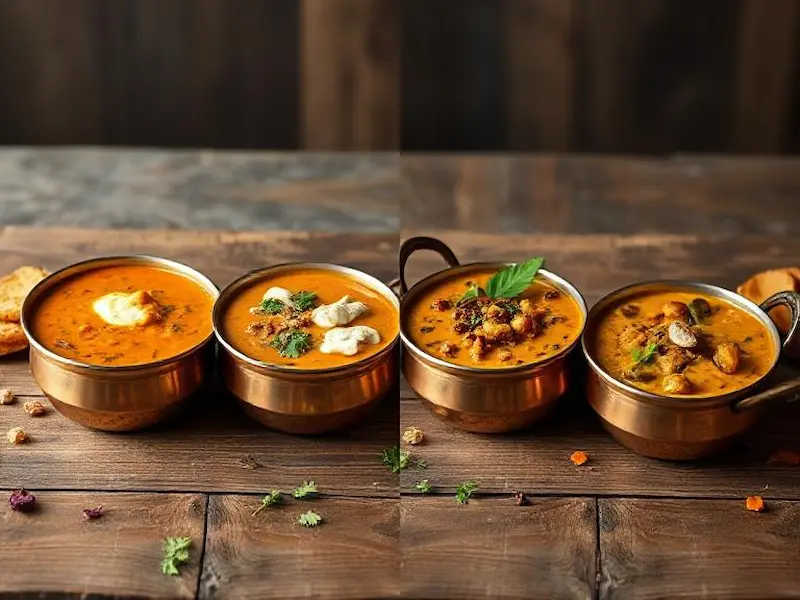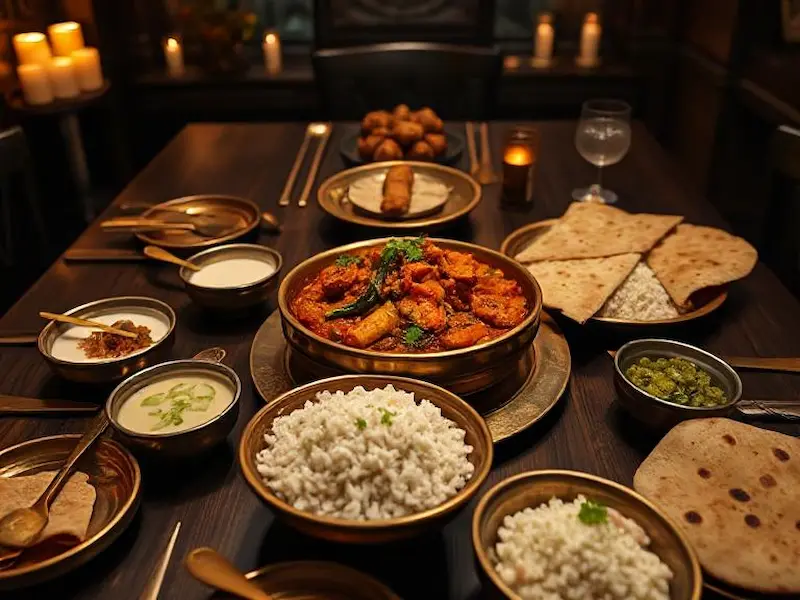Easy Spicy Indian Vegetable Curry with Cooling Cardamom Yogurt (30-Minute Comfort Food)
Are you looking for a dish that delivers one of the best comfort foods experiences in only 30 minutes and is packed with flavor? This uncomplicated spicy Indian vegetable curry recipe coupled with the refreshingly cardamom-flavored yogurt is a quick win trio for being quick, healthy and having your own restaurant-style kitchen quality – perfect for weekdays. So, regardless of whether you are an experienced cook or a complete novice, not only do you handle and master a blend of the most aromatic Indian spices but also figure out the secret for the creamy part of the curry and find a whole new shortcut for your quick and easy dinner.
Reasons Why You Will Love This Recipe
- Only 30 minutes duration with the recipe.
- The dish is full of fresh veggies which enhance its flavor and nutrition.
- Meals created from this recipe can be modified easily as per preference of proteins or regional variants.
- The recipe is naturally vegetarian; however, there are also easy vegan alternatives available.
- The dish has no complicated ingredients or steps.
What Makes Indian Vegetable Curry So Special?
Indian curries are the soul of the world of home cooking: spicy, juicy vegetables, thick gravy, and cold side-kits like yogurt or raita. But these are different from Thai or East Asian curries, because Indian ones get their complex flavors from the use of dry-roasted spice blends (masalas), caramelized onion-tomato bases, and layered cooking which allows the depth and warmth to blend together. Cardamom yogurt is used quite elegantly as it both imparts bright and creamy notes to the dish and at the same time, it mellows down the heat.
Most Important Ingredients for Proper Taste
Fresh Aromatics
- Onions (red or yellow), finely chopped
- Fresh tomatoes, chopped into very small pieces
- Fresh ginger and garlic paste made of freshly prepared ingredients
Most-Favorite Spices
- Garam masala (one of the most popular blends of cardamom, cinnamon, and cloves)
- Turmeric powder
- Red chili powder (the spiciness can be changed according to your taste)
- Coriander powder
- Cumin powder
- The most surprising and lovely thing about Indian food is kasuri methi (dried fenugreek leaves), for the richness of taste (if you have it)
- The very first step of heating the oil when the very first heated aromatic whole cumin seeds
Vegetables
Do not hesitate to be as colorful and creative as you want with these vibrant vegetable takes for your curry.
- Root vegetables: carrots, potatoes, sweet potatoes
- Cabbage family vegetables: cauliflower, broccoli
- Green: green peas, beans, bell pepper, spinach
Liquids and Fats
- Tomato purée or passata
- Vegetable stock (or water)
- Neutral oil or ghee
- The heavy cream, coconut milk, or cashew paste of the rich ones (check the dietary substitutions below)
For Cardamom Yogurt
- Non-flavored Greek yogurt (or coconut yogurt)
- 1/4 tsp ground cardamom
- A pinch of salt to taste
Step-by-Step: How to Make This Curry
1. Prep All Ingredients
If the pieces of vegetables are of the same size and not too big, the cooking will be even. Basically, you have to get your spices, liquids, and yogurt prepped first- Indian cooking is quite fast!
2. Make the Aromatic Base
- Do it in a small pot with oil/ghee that has a thick bottom and the heat should be high.
- Put whole cumin seeds into hot oil, wait for them to crackle, and at that time,
- If you have chopped tomatoes and tomato puree, add them. When the tomatoes are soft and the oil has begun to separate (8-10 minutes), the cooking is done. For flavor, while cooking, crush tomatoes with your spoon’s back.
- Just throw the dry spices along with the turmeric, coriander, cumin, garam masala, red chili powder, and kasuri methi. Stir for 1-2 minutes to allow them to toast.
- Insert ½ cup of water or vegetable stock and bring it to the boiling point. Let them simmer for 2 minutes to mix the flavors.
- Root and cruciferous vegetables (potatoes, carrots, cauliflower, broccoli) are the best to start cooking with. Stir well, cover, and cook for 10 minutes, stirring occasionally.
- First, add the softer greens (peas, beans, bell peppers, spinach) last 5 minutes — cook until just tender so that the color and the bite are preserved.
- If needed, adjust water/stock to the gravy consistency that is not too thick and coats the back of a spoon.
- For a decadent finish, cashew paste, cream, or coconut milk can be added to the dish and mixed in. Lower the heat and let the dish simmer gently for 2-3 minutes; do not let it boil vigorously.
- Sugar and salt/caramel — a little sugar can do wonders to bring out the acidity of the tomatoes!
- Mix 1 cup plain yogurt, ¼ tsp ground cardamom, and a pinch of salt until the mixture is smooth and fluffy.
- Cool it in a freezer to double the cooling effect when served!
- The flavor of onions will be stronger if you cook them slowly and at a low temperature.
- The “Bhuna” method (release of oil from the base while cooking) is the main factor in taste amplification.
- First, the spices must be toasted in the whole form before you grind them to get a fresh masala.
- Make the sauce super thick and should be tightly bonded in one with the help of a potato masher.
- For making a vegan version of the curry, you can use oil or coconut yogurt and replace dairy cream with coconut milk or add more cashew paste.
- Frozen mixed vegetables are a great time-saver! There is no need to take them out of the freezer first.
Customizations & Authentic Variations
Swap/Combine Vegetables:
- Adding corn, sweet potatoes, eggplant, bell pepper, and mushrooms not only makes the dish colorful but also provides it with nutrients.
- Empty your refrigerator by using the remaining vegetables. Moreover, it is also a great way to learn about Indian cuisine as “mix veg” curry is a popular dish in Indian households.
Protein Add-ins:
- Along with paneer cubes, tofu, chickpeas, kidney beans (rajma), or tempeh can be used to make a meal more filling.
Spice & Gravy Adjustments:
- Be sure to adjust the amount of chili powder to perfectly fit your taste.
- Use of coconut milk can give the curry a “South Indian” type character with curry leaves and mustard seeds.
- Simply add the first choice puree of squash or carrot to the dish for secret sweetness, and general nutritions.
Regional Twists:
- North Indian: A base of yogurt and cream is used, thus the sauce will be richer and thicker.
- South Indian: The texture is thin and brothier, and the sour notes of tamarind can be tasted besides the coconut milk and curry leaves.
- Bengali: Panch phoron spice along with mustard oil.
- Western Indian: The dish can be made to get a sweet-savory twist by peanut, jaggery (unrefined sugar), and coconut.
Serving Suggestions
- The curry can be delicious and comforting if it is served hot with basmati, brown, or turmeric rice.
- The perfect scoop and dip experience can be your naan, roti, or paratha all together with which you can enjoy the curry.Mix up your meal with elements like cucumber raita (yogurt with cucumber), pickled onions, fresh coriander chutney, and kachumber salad to create a layering of textures and flavors that will balance the main dish.
- You are also able to simply cook and add garbanzo beans, paneer, or quinoa to the curry in order to make it nutritious and with more protein.
Storage & Make-Ahead Tips
- Fridge: For 4-5 days, a container that is sealed can be used to store the curry. You get to taste it at its best the next day when the flavors have mingled.
- Freeze: 2 months are the maximum that it can be frozen. It is recommended to be warmed up slowly; however, for better texture, do not freeze the potatoes.
- Meal Prep: The next day is the best when the spices get infused, and hence you can enjoy the curry even more. Suitable for large-scale cooking.
FAQs
How can I reduce the spiciness?
Reduce the amount of red chili powder or green chili. You may add more coconut milk, cream, or yogurt. The best relief from the burning sensation is the yogurt!
Is this curry convertible to vegan/gluten-free?
Definitely! Just use the regular oil or coconut oil, coconut yogurt, and check if the stock is gluten-free.
What are the protein sources that can go well with the dish?
How about lady’s finger beans, tofu, paneer, or tempeh? Besides, quinoa and lentils will work well if you add them just before serving.
What can replace kasuri methi in the recipe?
A very little or no ground fenugreek seeds. The other spices will complete the process.
Nutrition & Dietary Info
- The recipe can still be vegan if no animal products are used.
- It is gluten-free if the stock or bouillon used is gluten-free.
- High in fiber, vitamins, and plant protein if you add legumes or paneer to the recipe.
